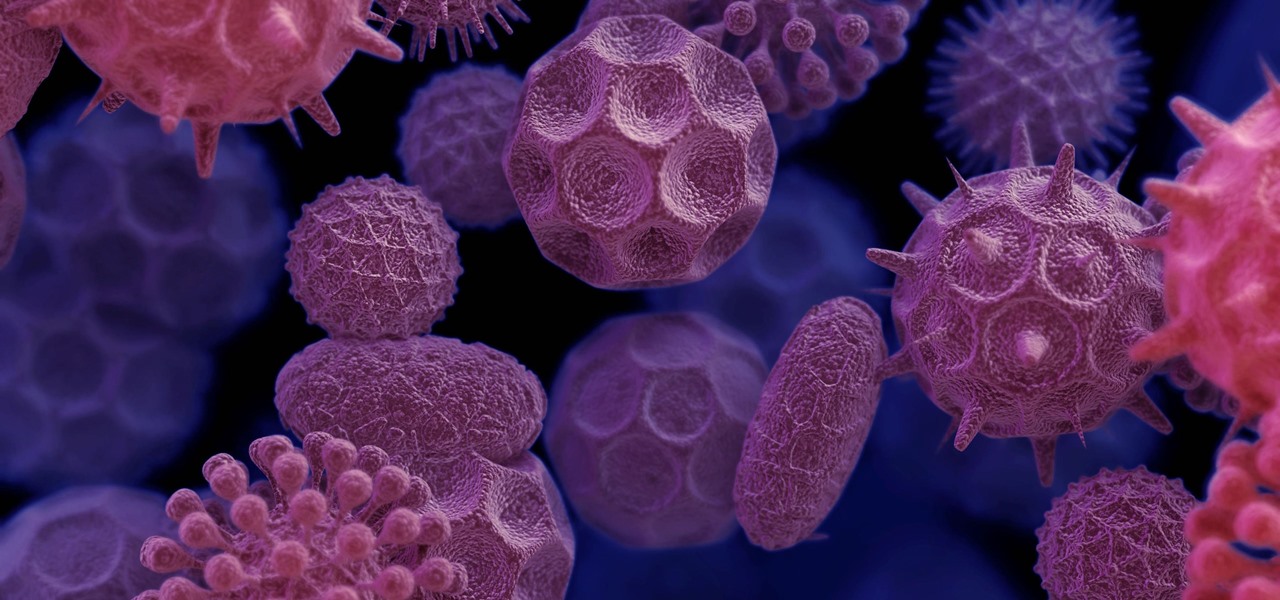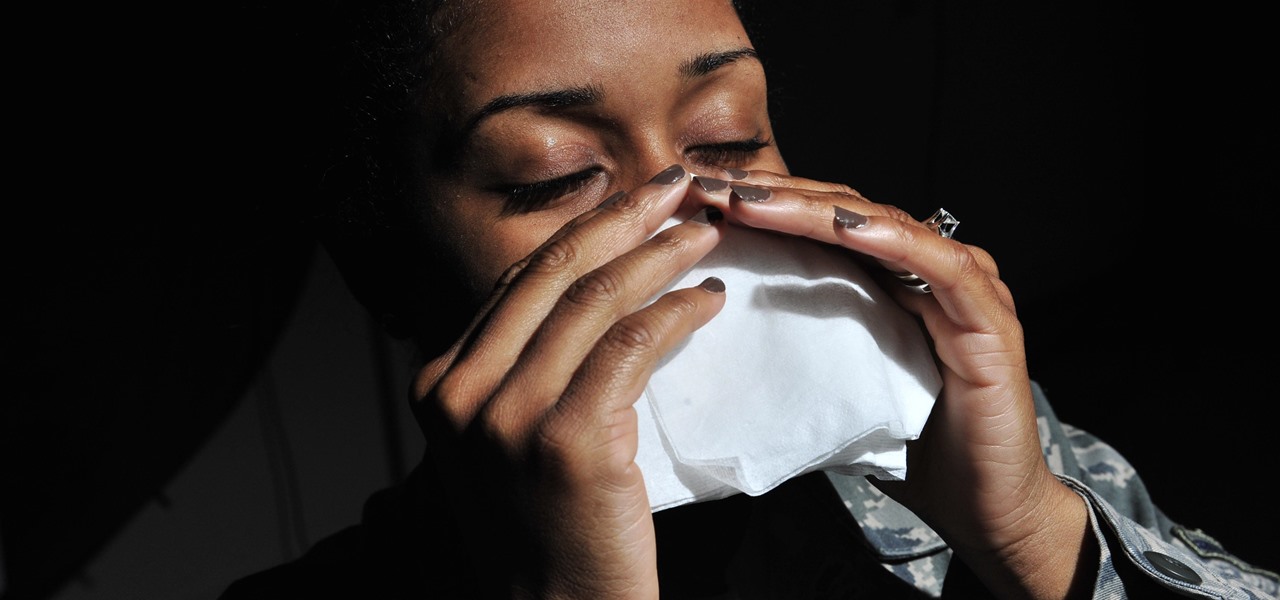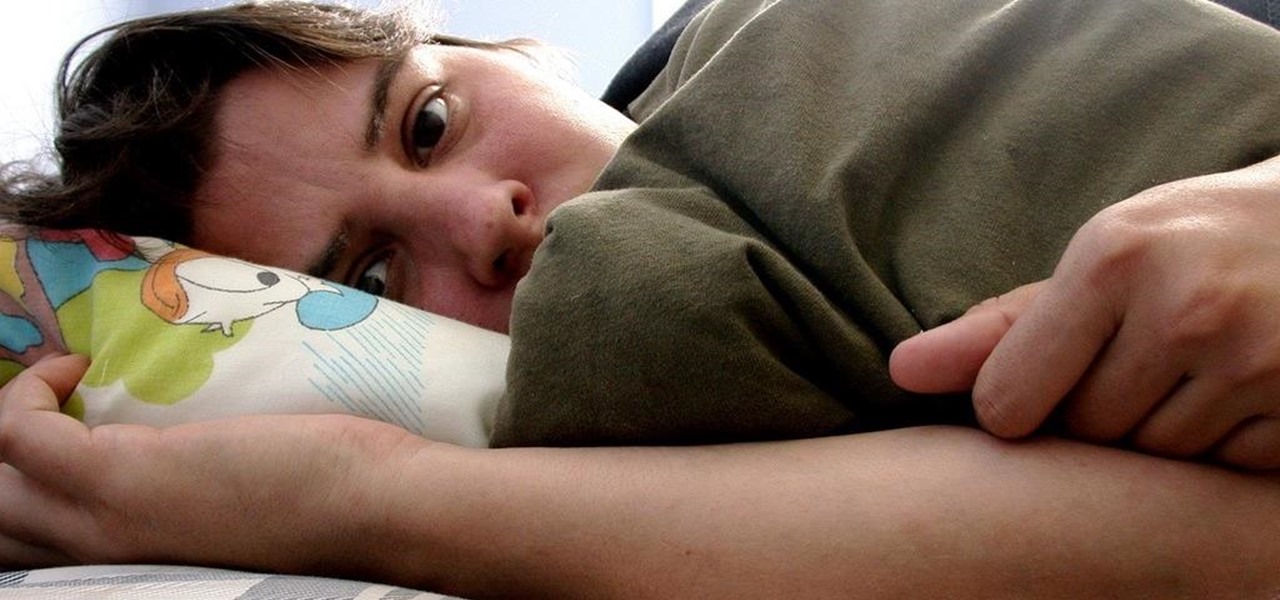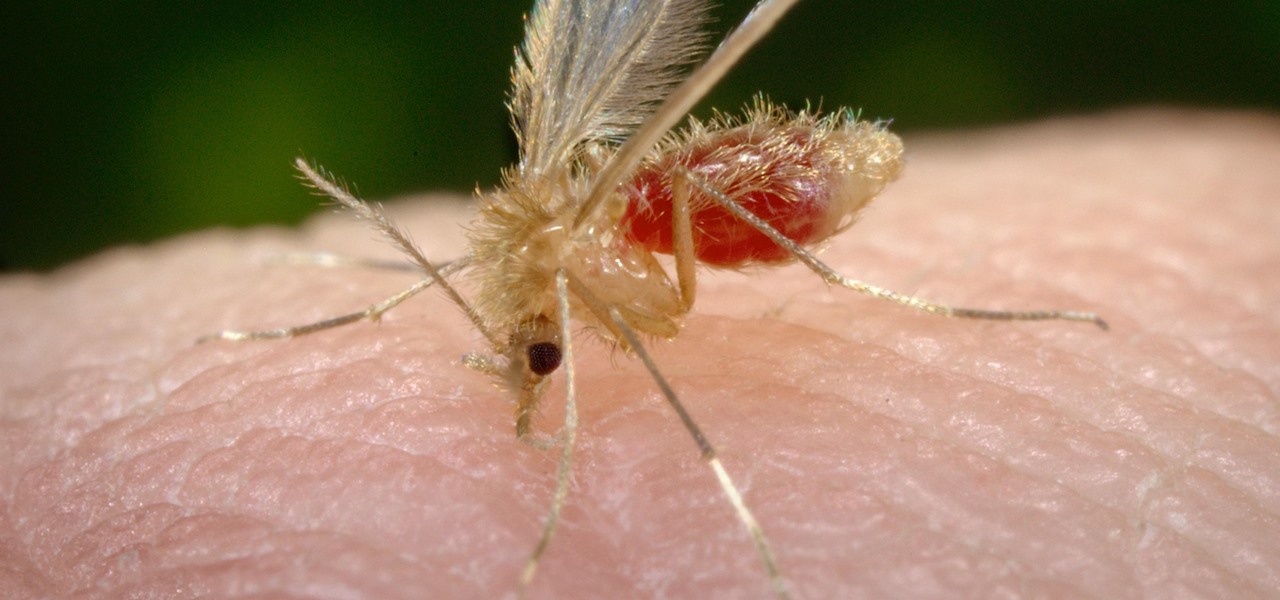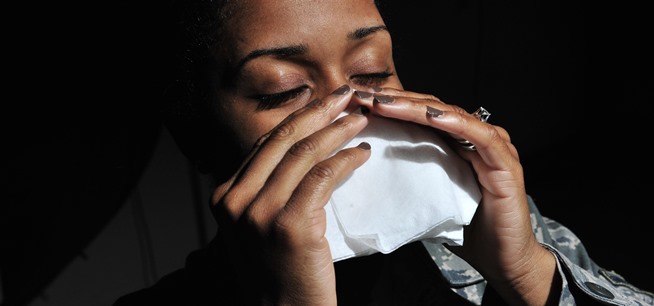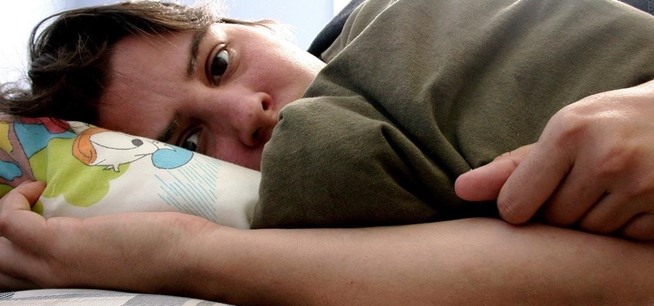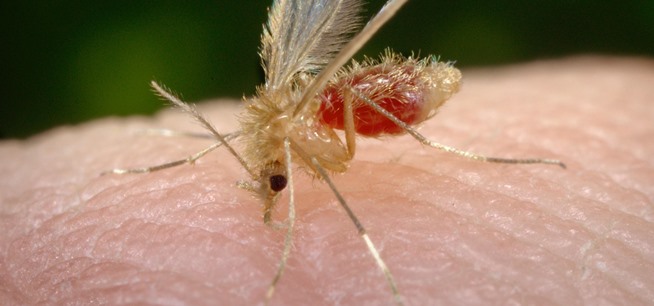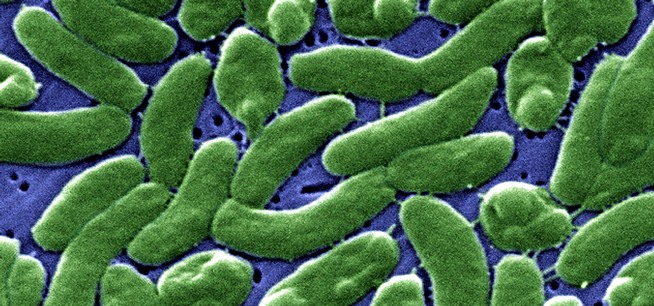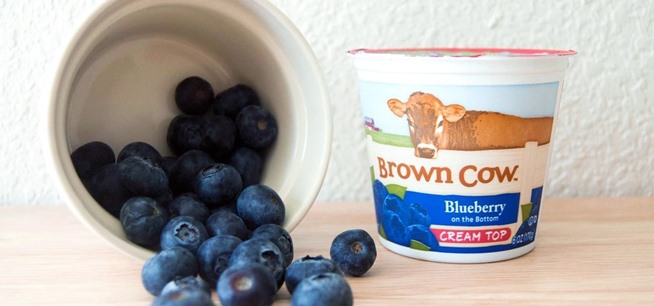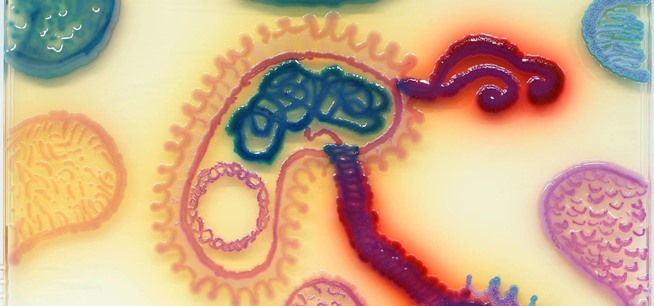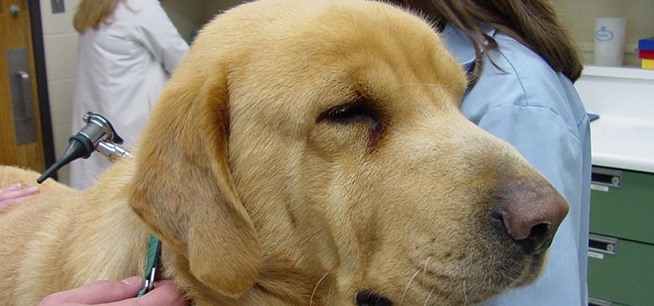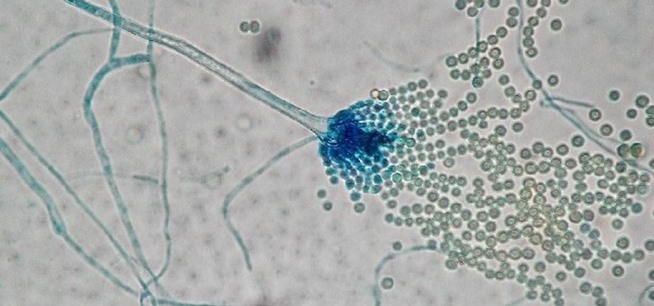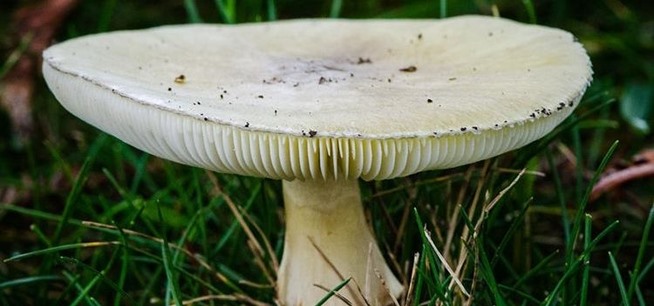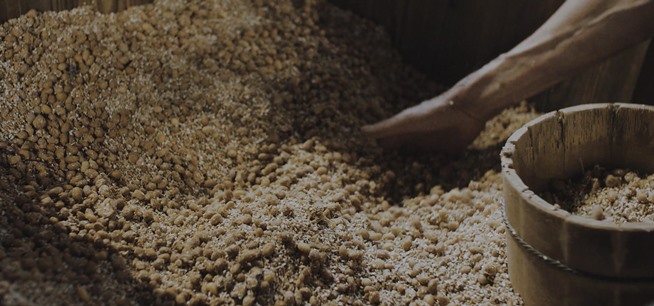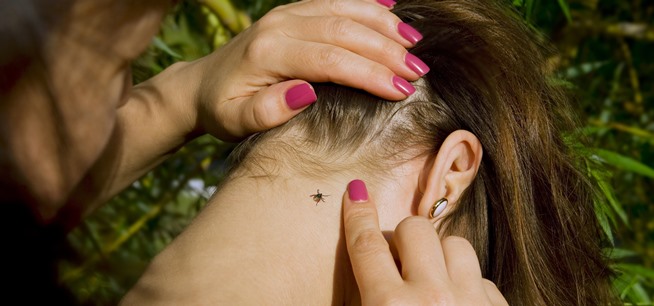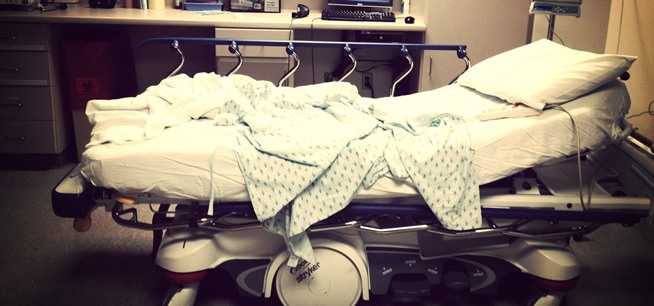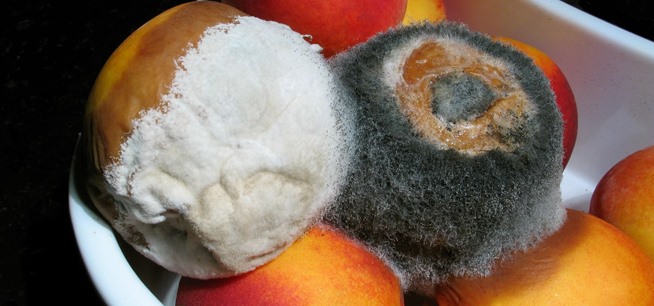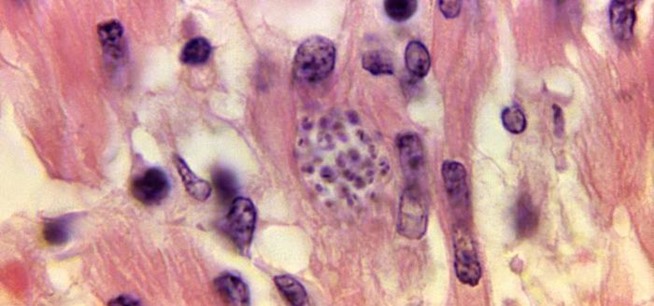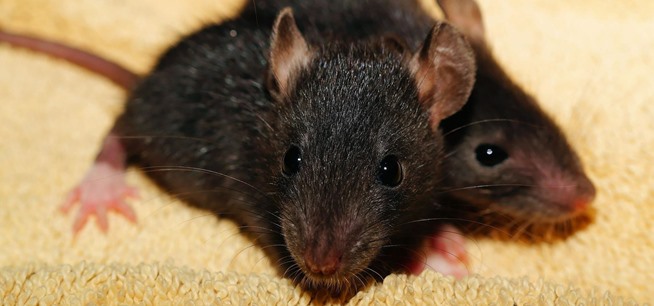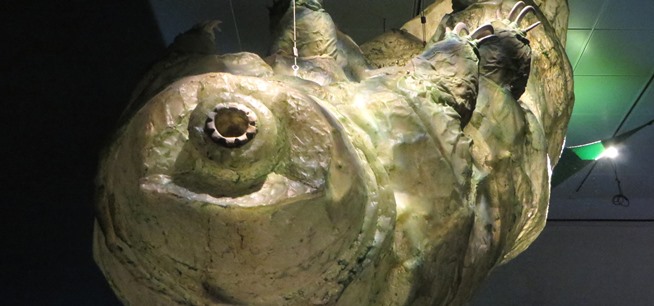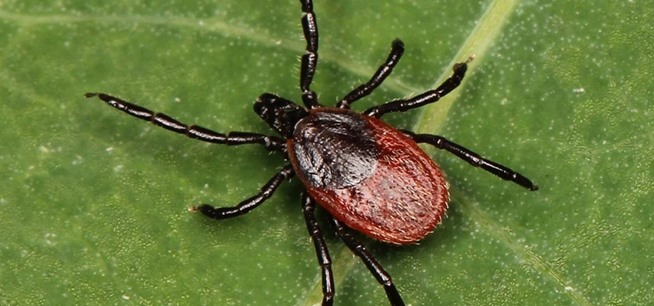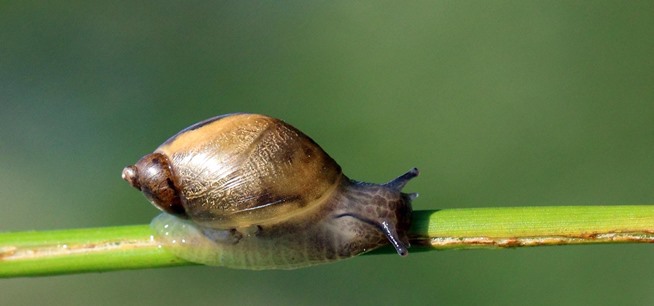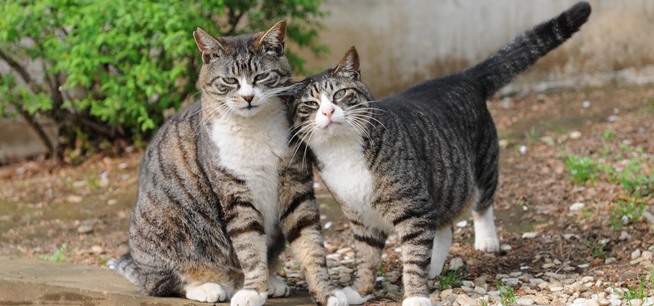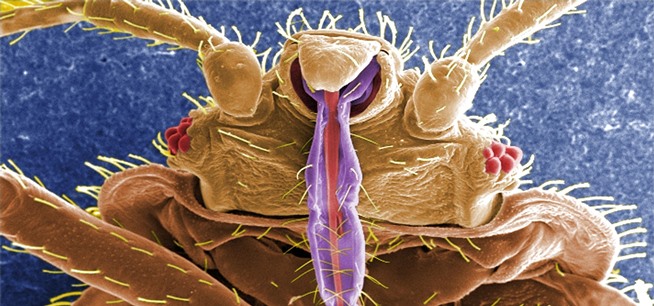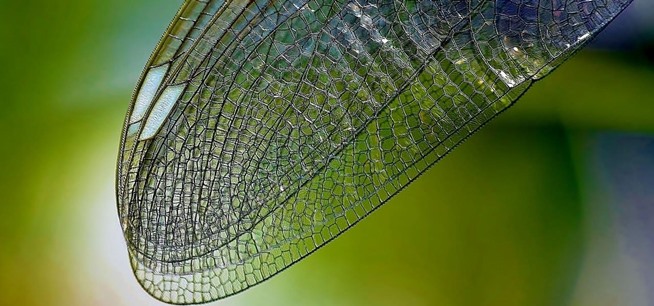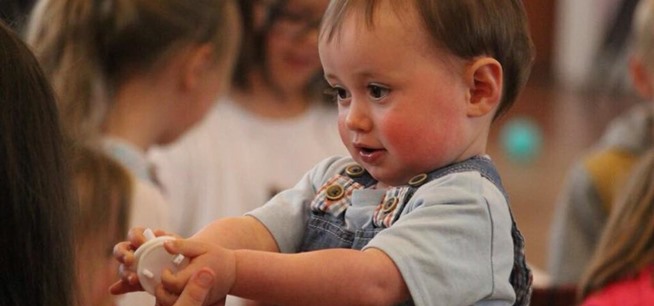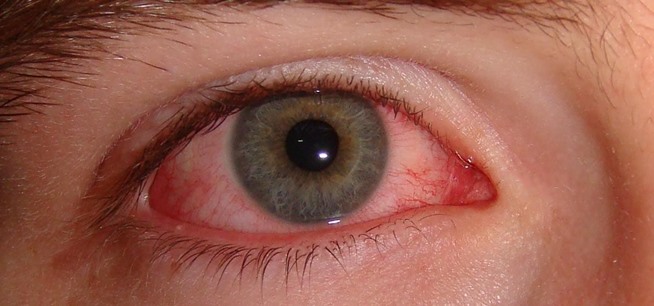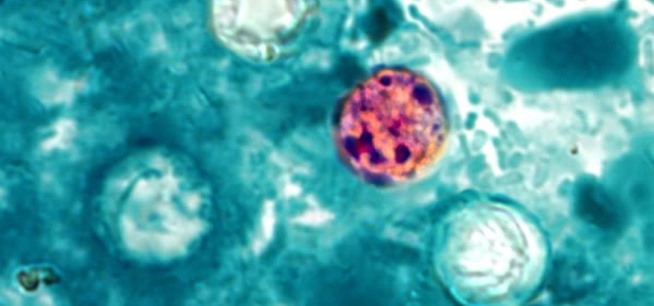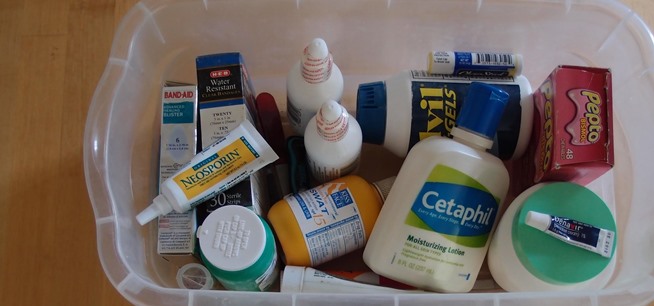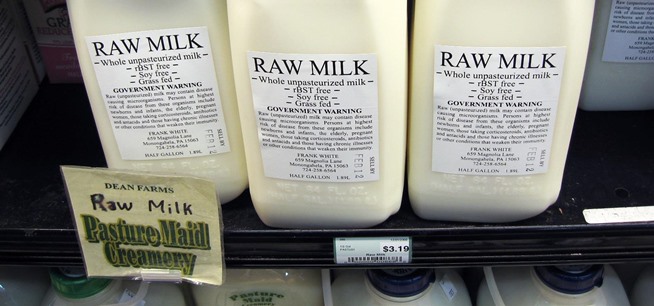

News: Out Damn Spot! Researchers Discover Microbes Are the Reason for Stains on Ancient Scrolls
This is a tale about microbes, a man who became a hermit, and the parchment that carries both of their stories.
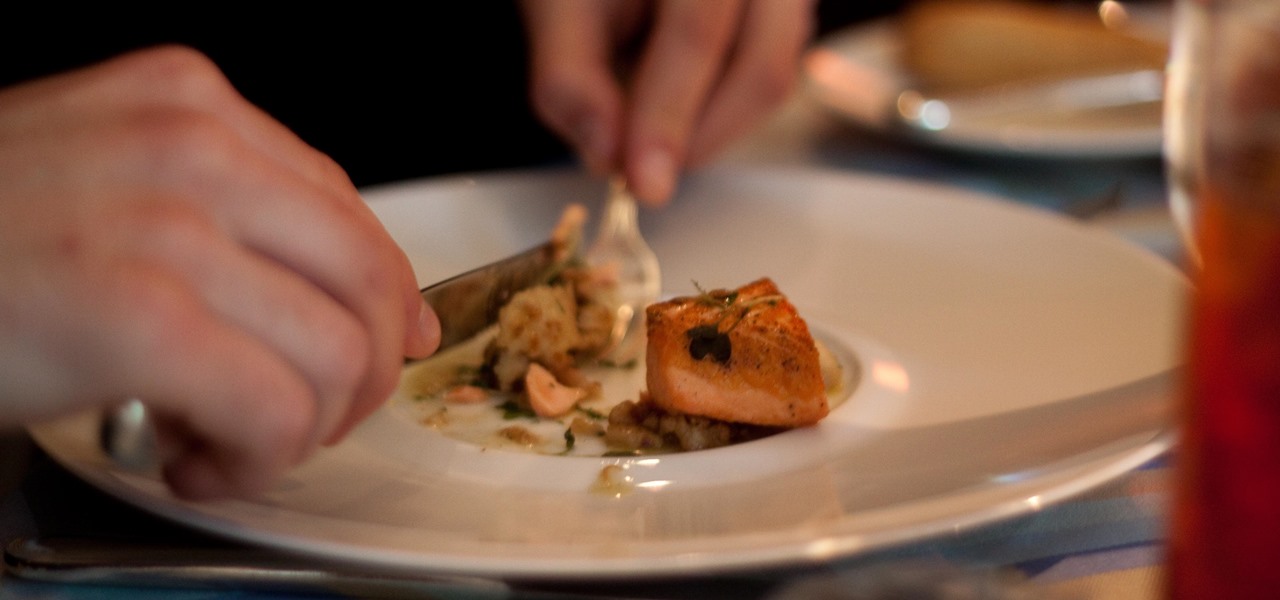
News: Deadly Fish Virus May Take Pacific Salmon Off the Menu
A virus easily spread among trout and salmon could make it harder to keep your favorite fish on the menu.

News: Airlines' Reliance on Group Boarding Could Spread Pandemics
On the airplane, in the middle of cold and flu season, your seatmate is spewing, despite the clutch of tissues in their lap. Your proximity to an infectious person probably leaves you daydreaming (or is it a nightmare?) of pandemics and estimating how likely it is that this seatmate's viral or bacterial effusions will circulate throughout the plane and infect everyone on board.
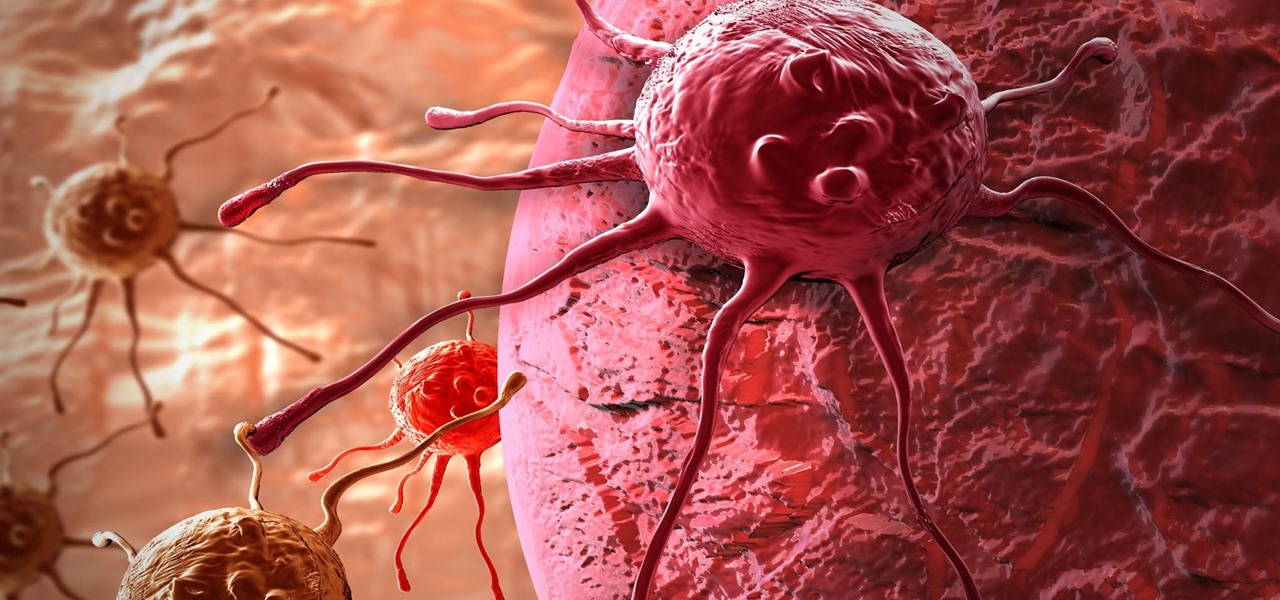
News: Cancer Patients Out of Options Are Hoping for a Cure from This Mysterious Bird Virus
Andre was enjoying the carefree life of a 12-year-old with his friends, riding his bike and playing sports, like all kids that age. Schoolwork wasn't hard for him, and his grades showed that.
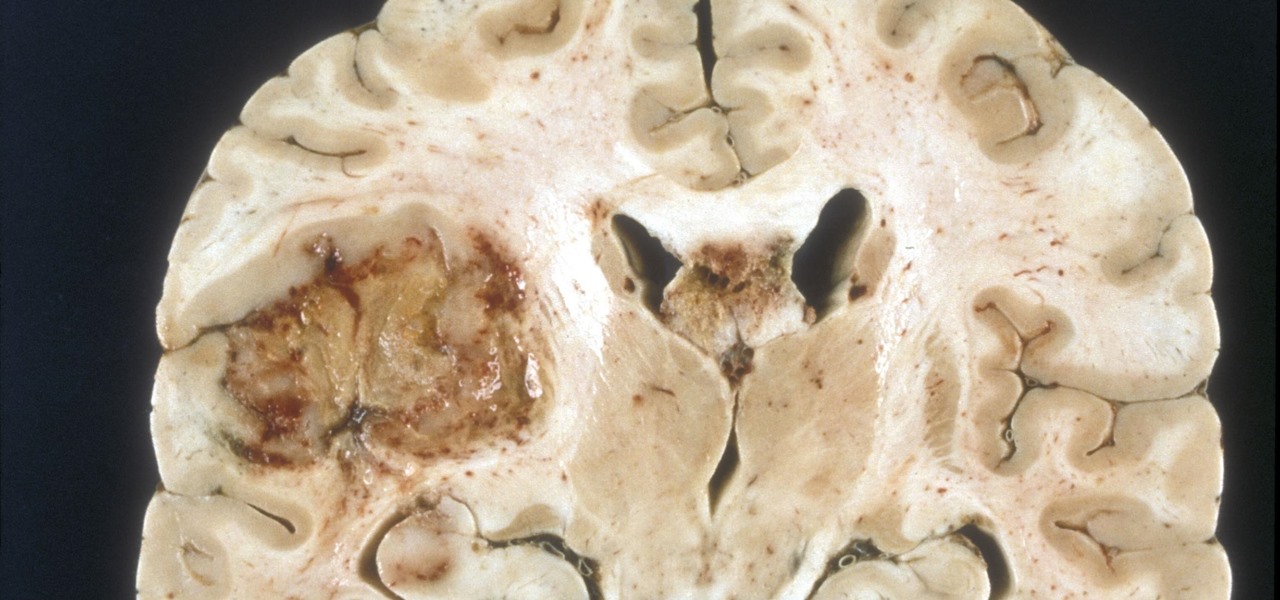
News: In the Ultimate Irony, Zika Virus May Cure Brain Cancer
A deadly type of brain tumor and Zika-related brain damage in developing fetuses are devastating brain conditions that, at first glance, may seem unrelated. However, thanks to new research, their paths seem to cross in a way that could benefit patients. A new study has shown that Zika kills brain cancer stem cells, the kind of cells most resistant to treatment in patients with glioblastoma, a deadly brain tumor diagnosed in about 12,000 people in the US each year.
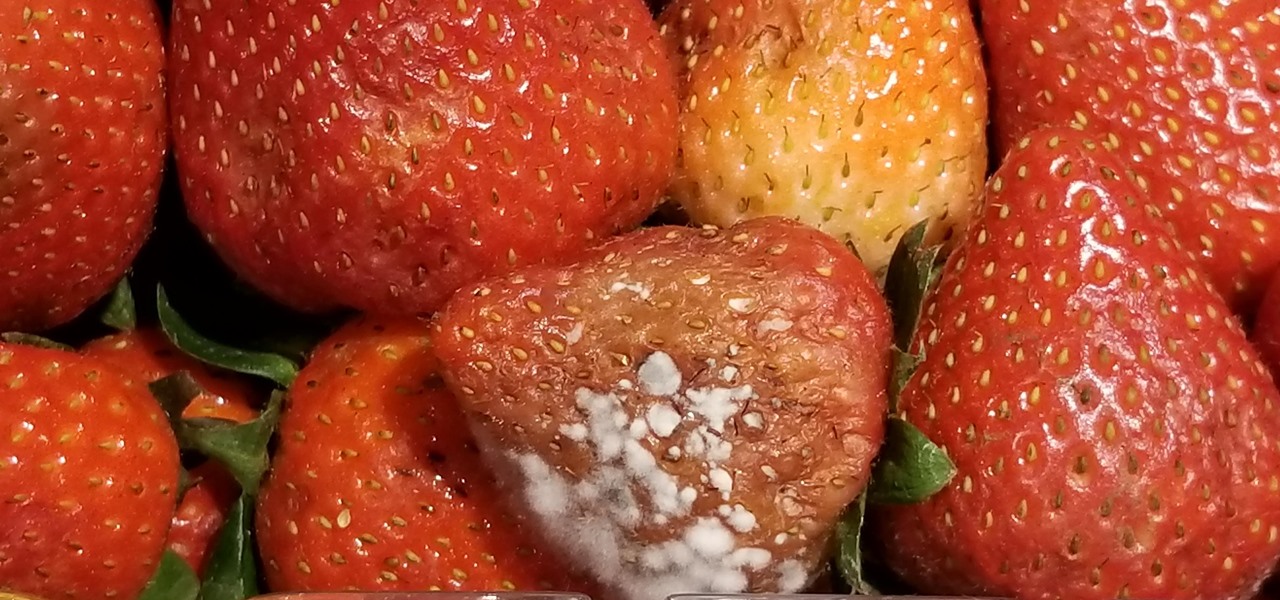
News: Microbe-Fighting Plastic Wrap Keeps Fruits Fresher for a Week
In the case of rotting food, microbes are not our friends. Now, scientists have developed a new food wrap coated with tiny clay tubes packed with an antibacterial essential oil that can extend the shelf life of perishable food, so we can waste less and eat more.
Top Trending Posts

Inspirational Initiative: Cherokee Nation on the Way to Eliminating Hep C
A recent initiative by the Cherokee Nation American Indian Tribe delivers a success story for knocking out a silent killer — Hepatitis C.
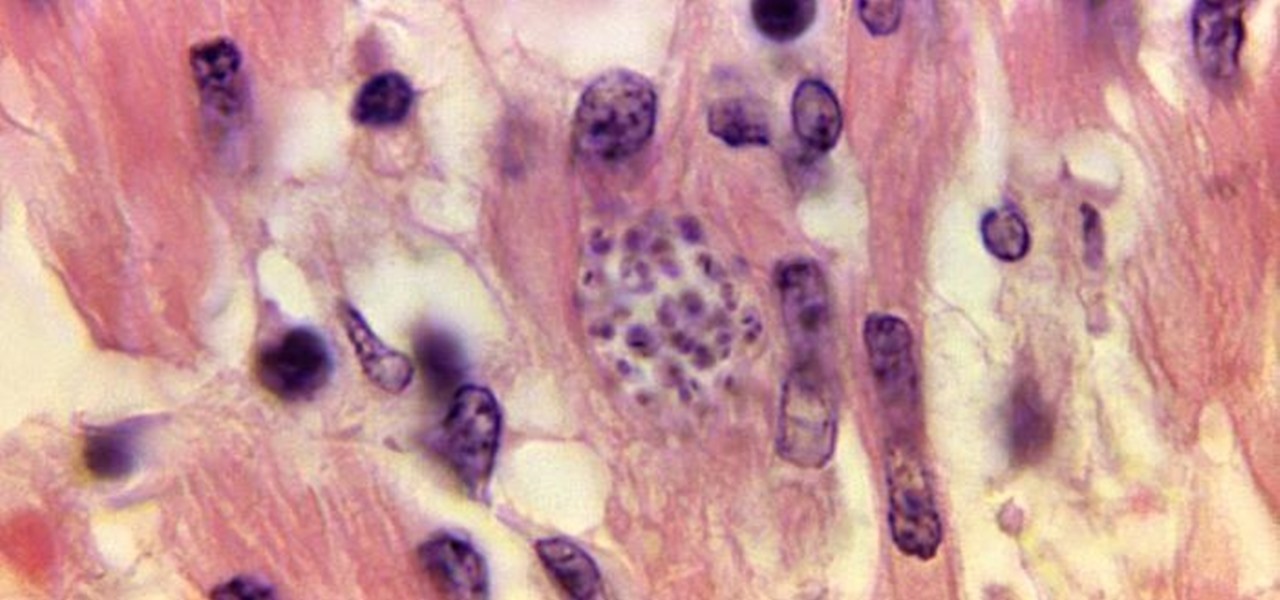
News: Finally! First US Treatment Approved for Heart-Burrowing 'Kissing Bug' Parasite
For the first time, the US Food and Drug Administration (FDA) has approved medication to treat children with a serious infection called Chagas disease, which stealthily infects and damages the hearts of millions of victims a year.
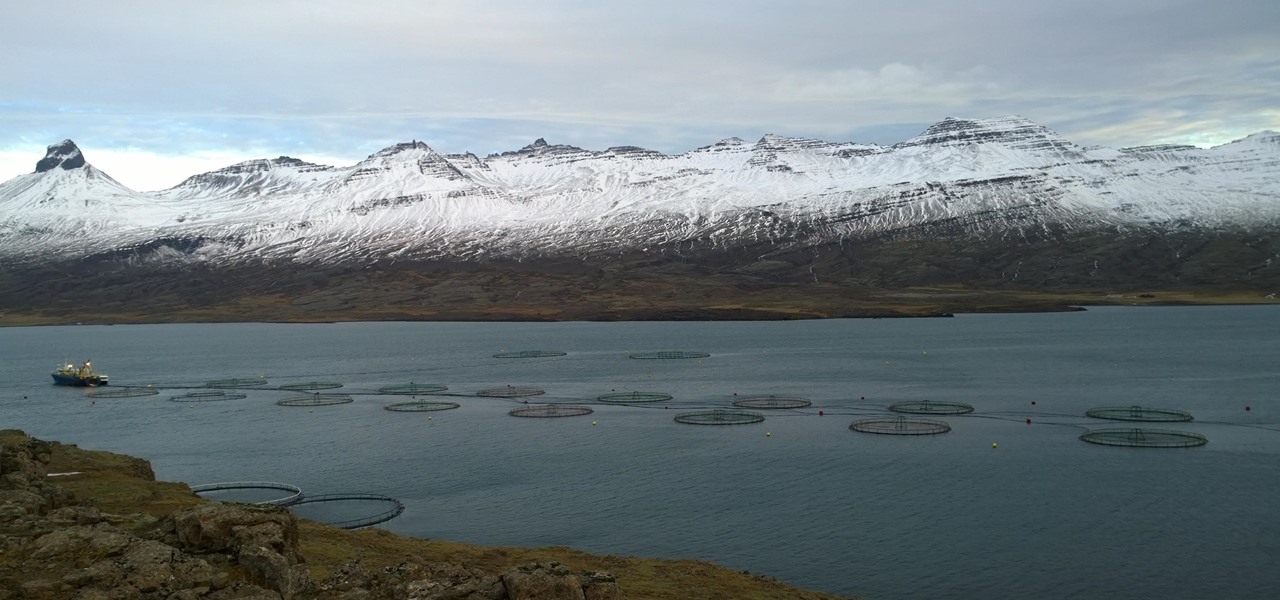
News: The Problem with Farmed Fish — Their Food Is Spreading Antibiotic Resistance
As the fish farming industry struggles to become more environmentally friendly, it just gained another problem. Fish food loaded with antibiotic-resistant genes.

News: Scientists Turn Bacteria into Mini Cyborg Solar Panels
Plants all around us capture sunlight every day and convert it to energy, making them a model of solar energy production. And while the energy they make may serve the needs of a plant, the process isn't efficient enough to generate power on a larger scale. So, scientists from the University of California found a way to treat bacteria with chemicals that turned them into photosynthesis machines, capable of generating products we can convert into food, fuels, and plastics.
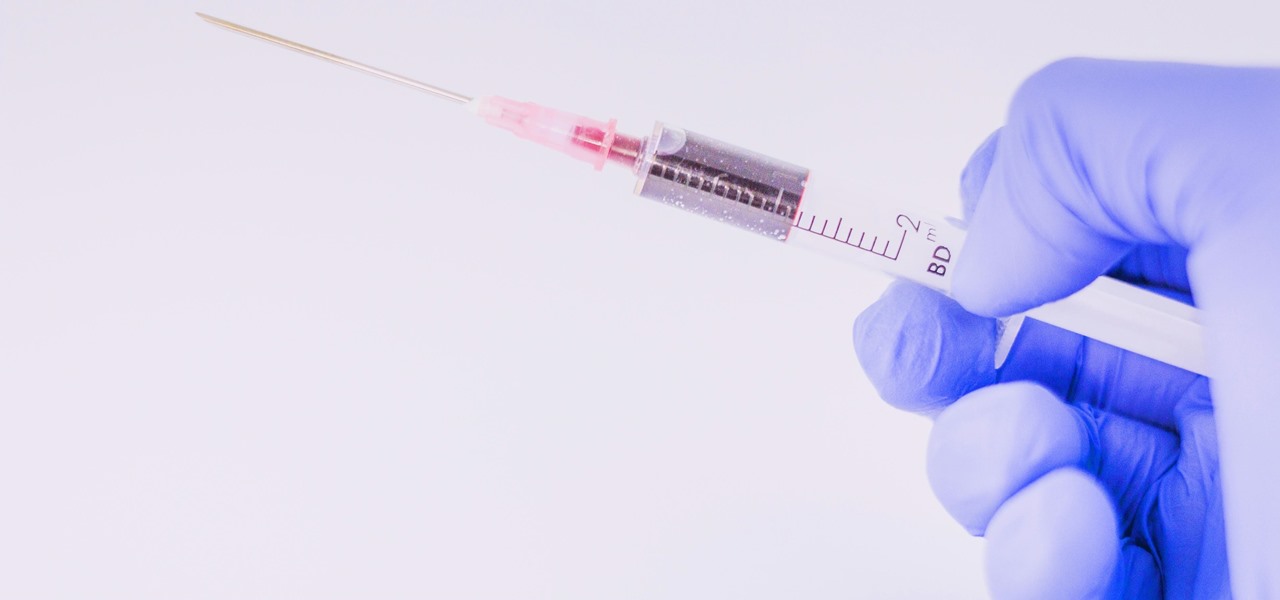
News: Monthly Injection Has Potential to Replace Daily Handfuls of HIV Drugs
People infected with HIV take many different types of pills every day to decrease the amount of virus in their body, live a longer and healthier life, and to help prevent them from infecting others. That could all be in the past as new clinical trials testing the safety and effectiveness of a new type of treatment — injections given every four or eight weeks — look to be equally effective at keeping the virus at bay.

Survival of the Fittest: Athletes' Gut Microbes Are Tailored to Help Them Compete
The bacteria in our gut — a community called the gut microbiome — have been in the spotlight a lot lately. What we're learning about how our intestinal bacteria adapt and grow with our bodies could help athletes perform better, according to researchers starting a company focused on creating probiotics that mimic athletes' microbiomes.

News: Arizona Woman Dies After Catching Tularemia from Her Dog
On June 11, 2016, an Arizona woman died from what appeared to be several infections, including pneumonia. She likely caught at least one of these from her dog.

News: Rising Tide of Dust in the US Could Mean Public Health Menace
Blowing dust and fungal spores are creating a public health problem that could be just a slice of what's to come with climate change.

Sweeter Than Blood: Researchers Are Making Mosquitoes' Preference for Sugar Deadly
If you have a taste for sweets, you have at least one thing in common with mosquitoes. While too much sugar is unhealthy for humans, a new product makes sweets deadly to mosquitoes.
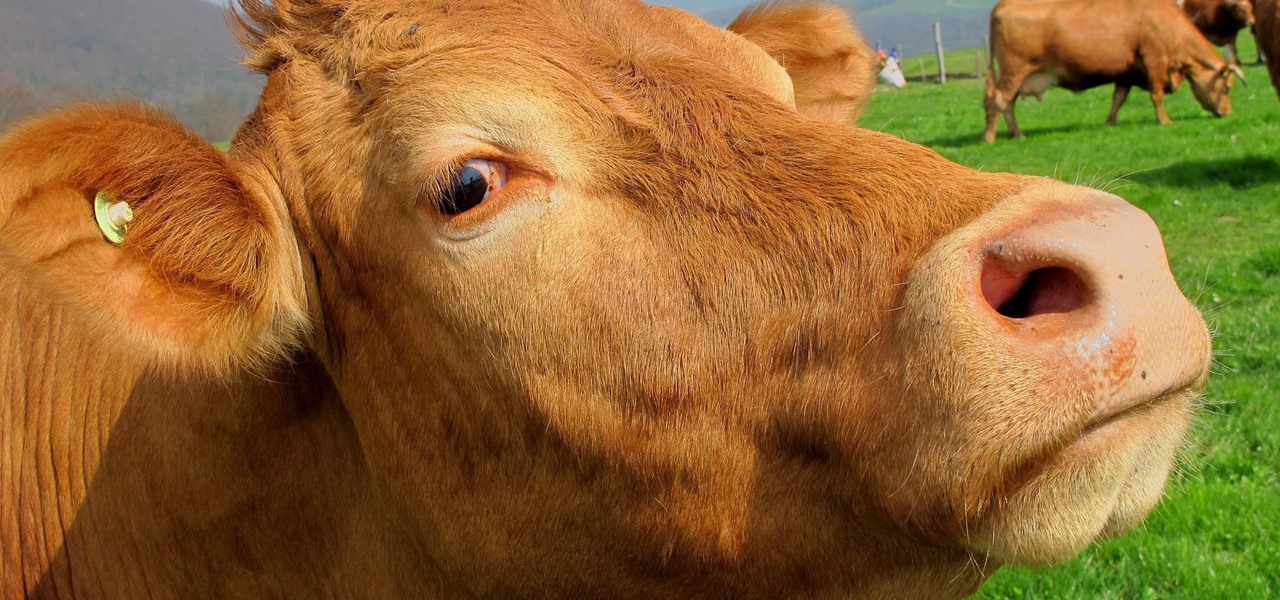
News: Researchers Look to Cows to Create Vaccine for HIV
A vaccine against HIV might prevent the disease that we can't seem to cure. Some HIV patients make antibodies that can take down the virus, much the way a vaccine might. But, scientists haven't been able to provoke that type of response in other people. However, in a process that might work in humans, a group of researchers has successfully generated antibodies in cows that neutralize multiple strains of HIV.

Deadlier When Hot: These Infections Are Likely to Get Worse as the Climate Changes
When the climate changes, so do all the things that rely on the climate, including people, plants, and pathogens. A European study recently took a broad look at what kind of microorganisms are most likely to be affected as climate change heats, cools, dries, and wets the world around us.
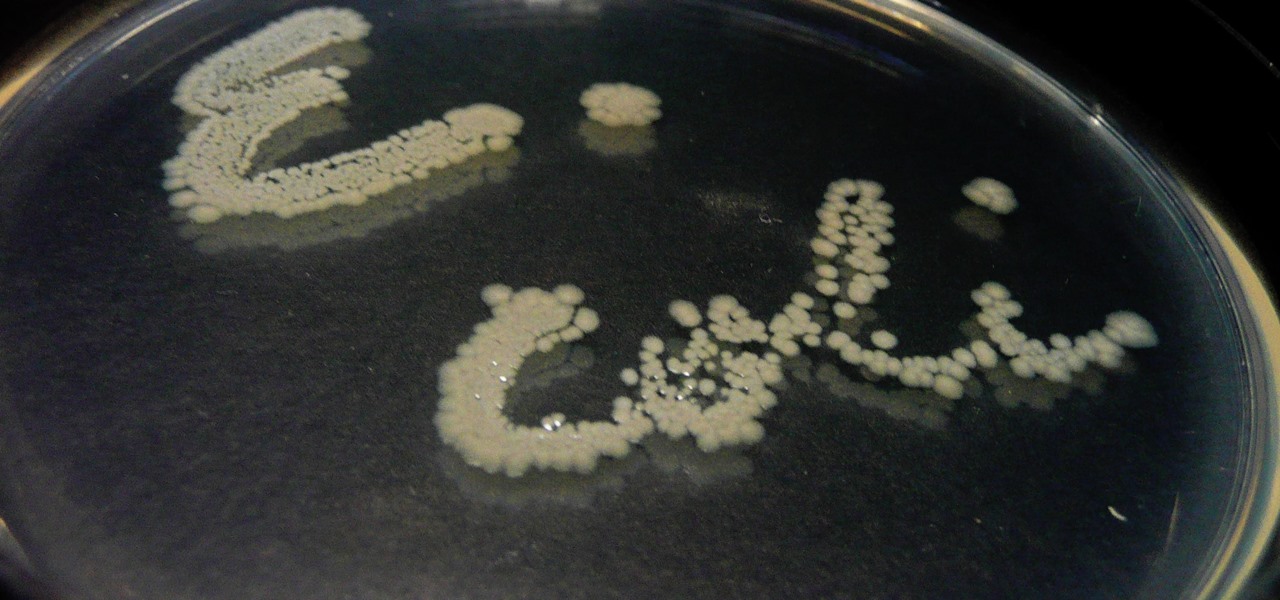
News: Starve E Coli of Copper to Cure Aggressive UTIs
Urinary tract infections (UTIs) drive over eight million people to seek medical attention every year. Almost all — as many as 90% — of those infections are caused by Escherichia coli. Copper can kill bacteria, but E. coli has found a way to capture the copper, preventing its antibacterial action. Now, researchers have found that, in a cruel irony, the bacteria use the copper it grabs as a nutrient to feed its growth.
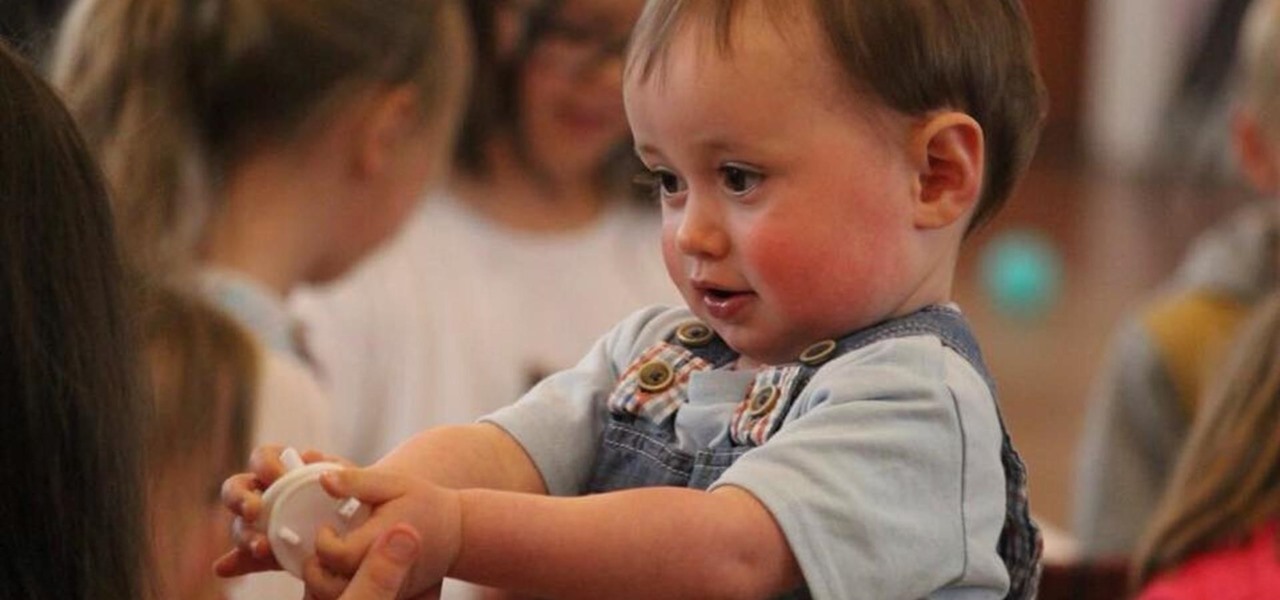
Lucky Break: Pneumococcal Vaccine Fights Off Ear Infections, Too
More prescriptions for antibiotics are written for ear infections than any other type of infection. A new study comparing the incidence and causes of ear infections in children between the ages of six months and three years found that the incidence of ear infections over the last decade has dropped significantly since the 1980s.
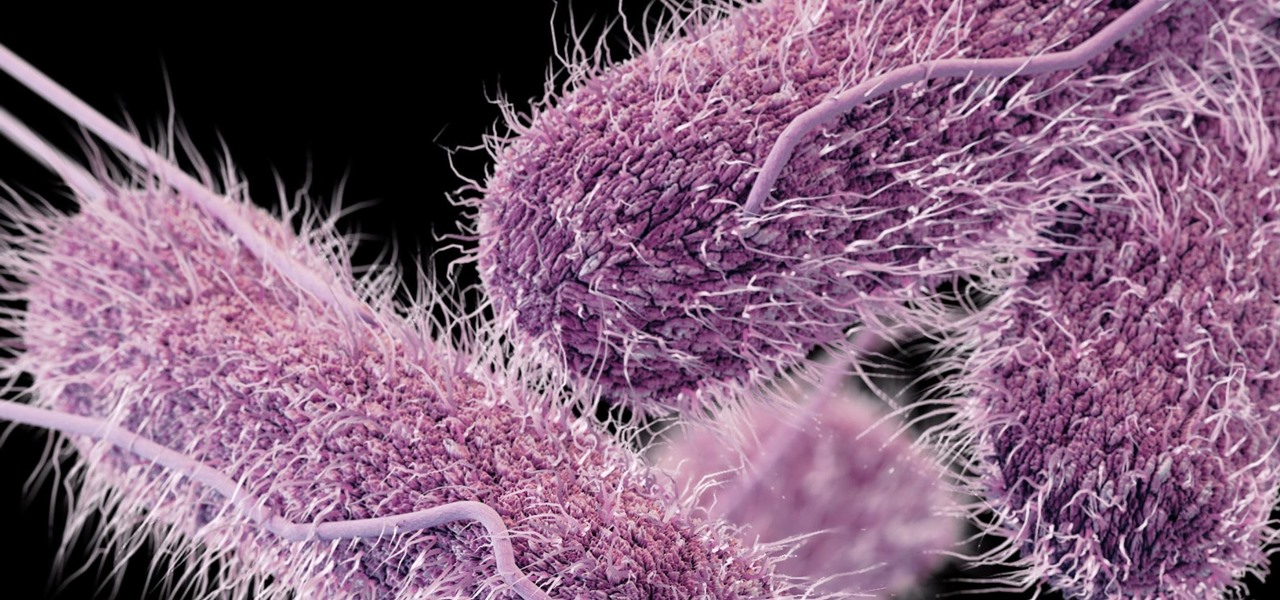
News: This Genetic Defect Could Be Why Typhoid Mary Never Got Typhoid Fever
Whether or not a microbe is successful at establishing an infection depends both on the microbe and the host. Scientists from Duke found that a single DNA change can allow Salmonella typhi, the bacteria that causes typhoid fever, to invade cells. That single genetic variation increased the amount of cholesterol on cell membranes that Salmonella and other bacteria use as a docking station to attach to a cell to invade it. They also found that common cholesterol-lowering drugs protected zebrafi...
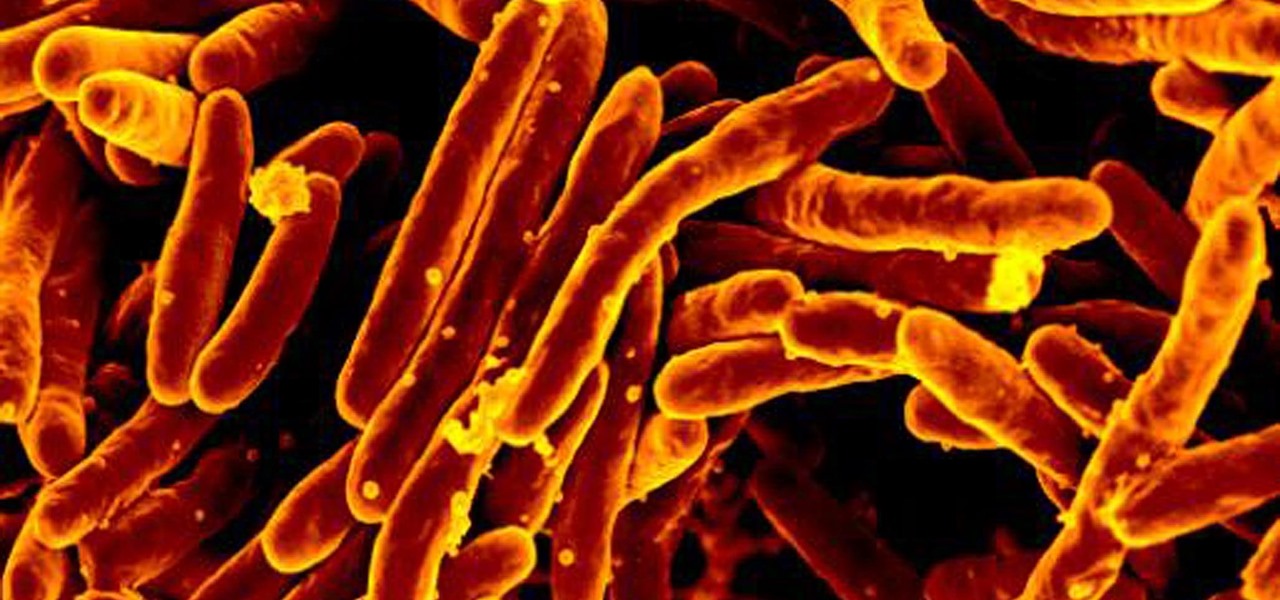
News: Supercomputer's Simulated Patients Help Doctors Choose the Right TB Meds
The incidence of tuberculosis (TB) is dropping in the US, but the World Health Organization (WHO) considers it to be epidemic in the rest of the world — there were over 10 million new cases in 2016.
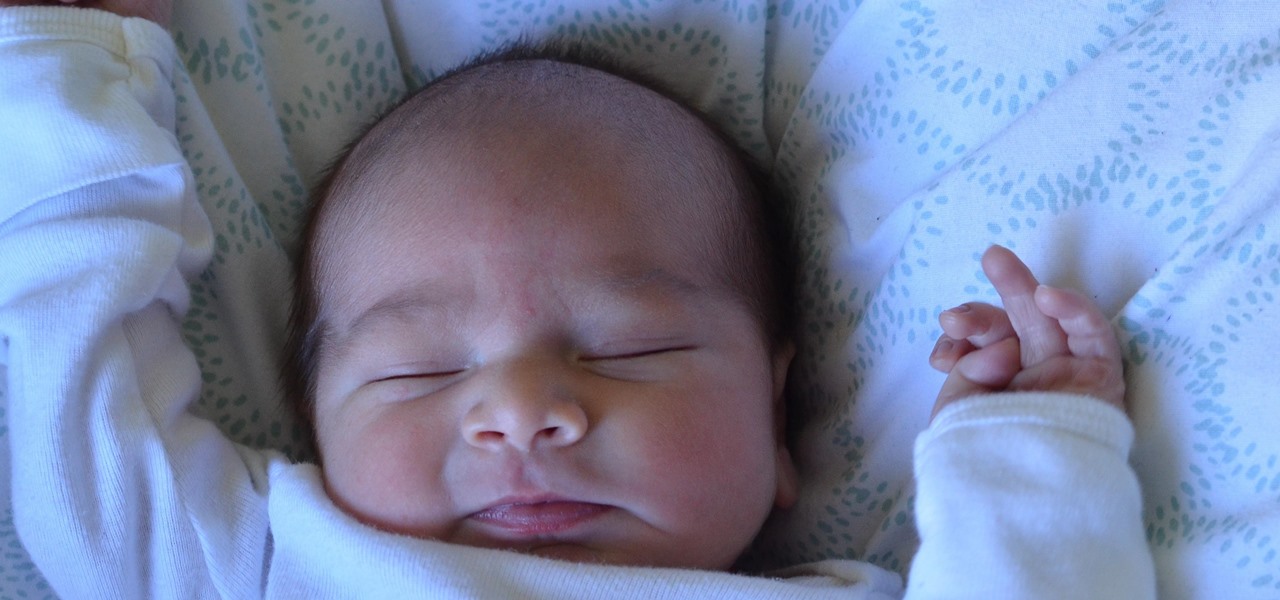
News: Probiotics Could Cut Sepsis in Infants for Just $1 a Day
Bacteria, viruses and other germs sometimes set off the immune system to overreact, producing a severe condition called sepsis. Sepsis is so dangerous that it is the leading cause of death of children across the world, killing a million kids every year, mostly in developing countries. Probiotic bacteria might be able to prevent sepsis and infections, but no large research studies have been done to find out whether that actually works. Until now.
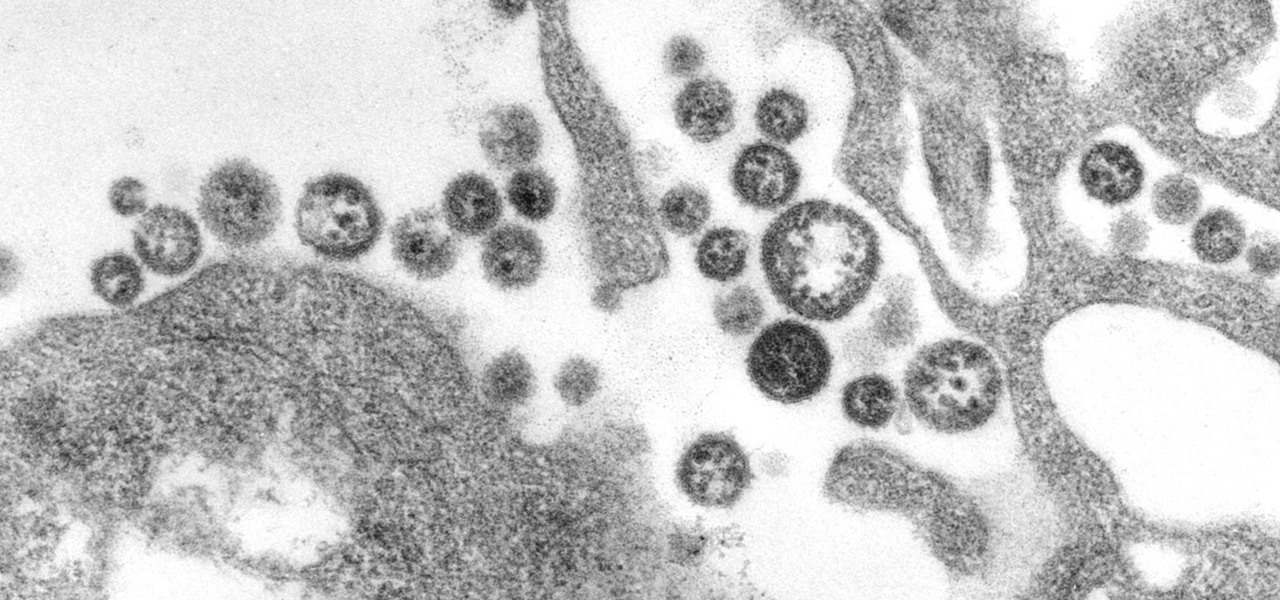
News: New Research May Help Stop Deadly Lassa Virus
A recent study offers information that might help combat a deadly virus that affects an estimated 300,000 people each year in West Africa.
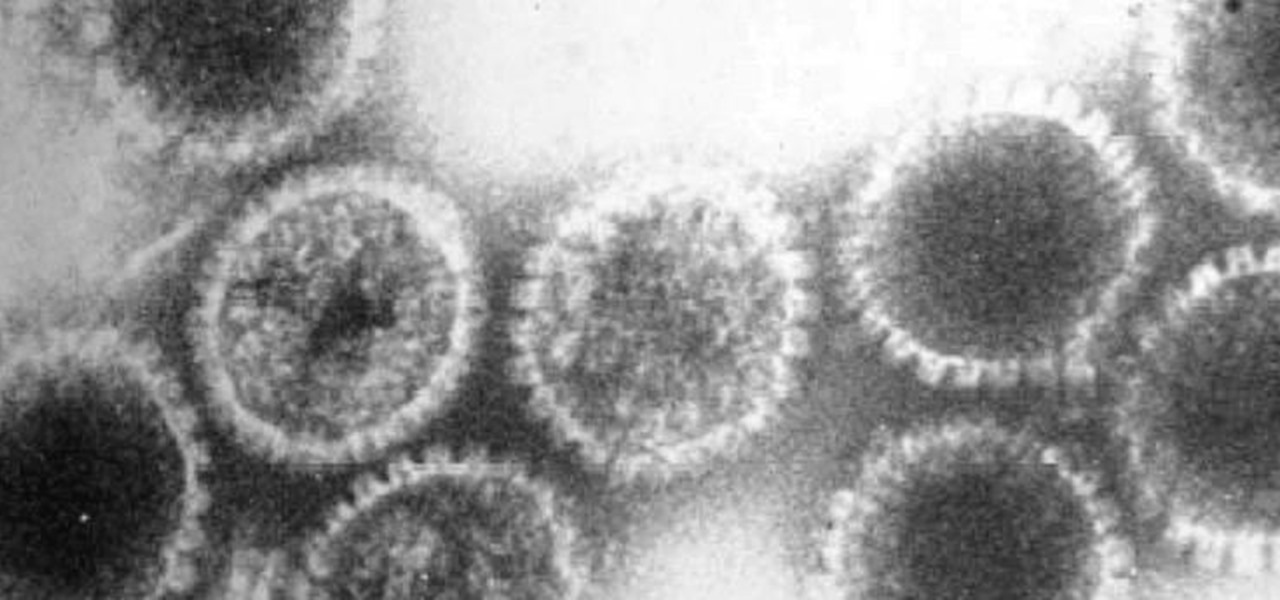
News: A New Set of Cancer Drugs May Work Against Viruses, Too
How can a drug used to treat cancer be effective against viruses, too? The answer lies in the drug's shared target — specifically, cellular components that control the activity of genes. A new research study showed that one such type of drug, histone methyltransferase inhibitors used in cancer clinical trials, has activity against herpes simplex virus, too.
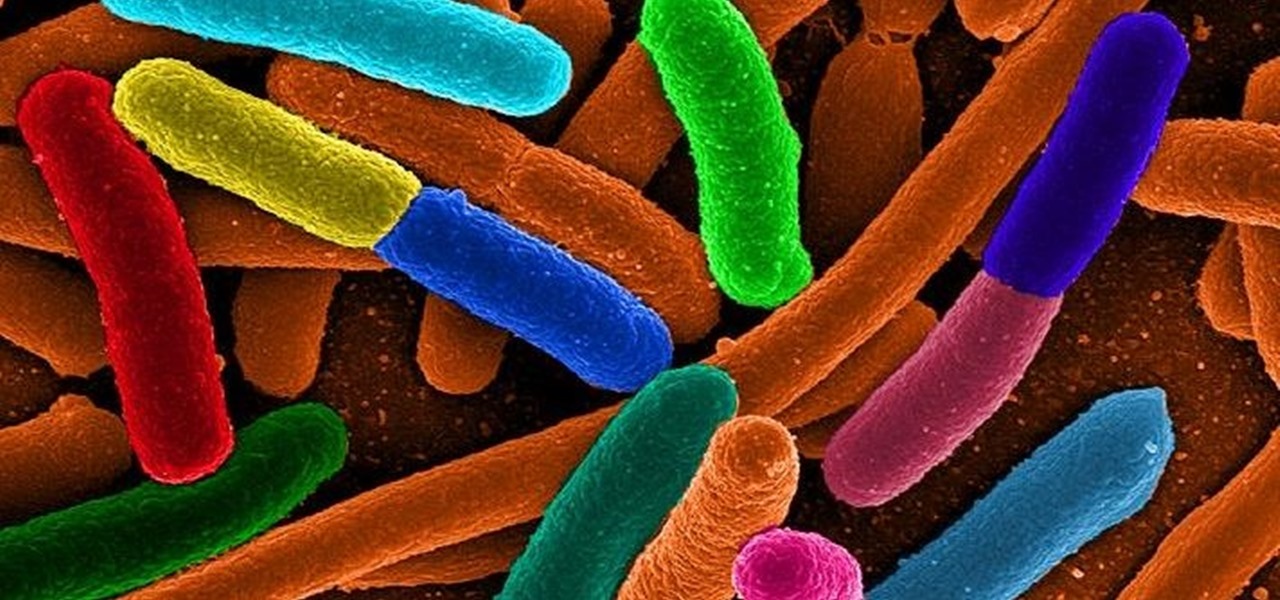
News: Scientists See Bacteria Responding Electrically to Physical Stimuli for the First Time
Scientists know that bacteria create their own energy, get nutrients to run their cellular processes, and multiply. But, bacteria haven't been shown to respond to external mechanical stimulation or signals in a way that's similar to how our bodies respond to touch, until now.
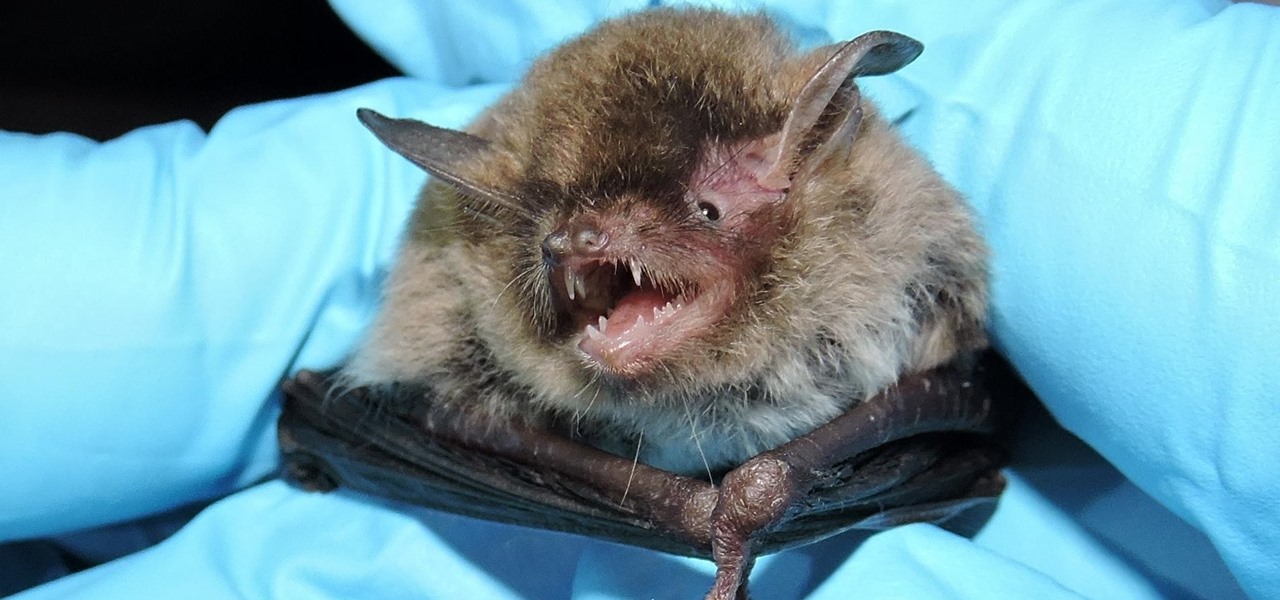
News: Bad News for Bats — Deadly Fungus Spreading This Summer
While not cuddly to most, bats are shy, skilled flyers that fill an important role in their environments. A new study reveals a deadly disease decimating North American bat populations has stepped up its attack on vulnerable bat populations in the summer months.
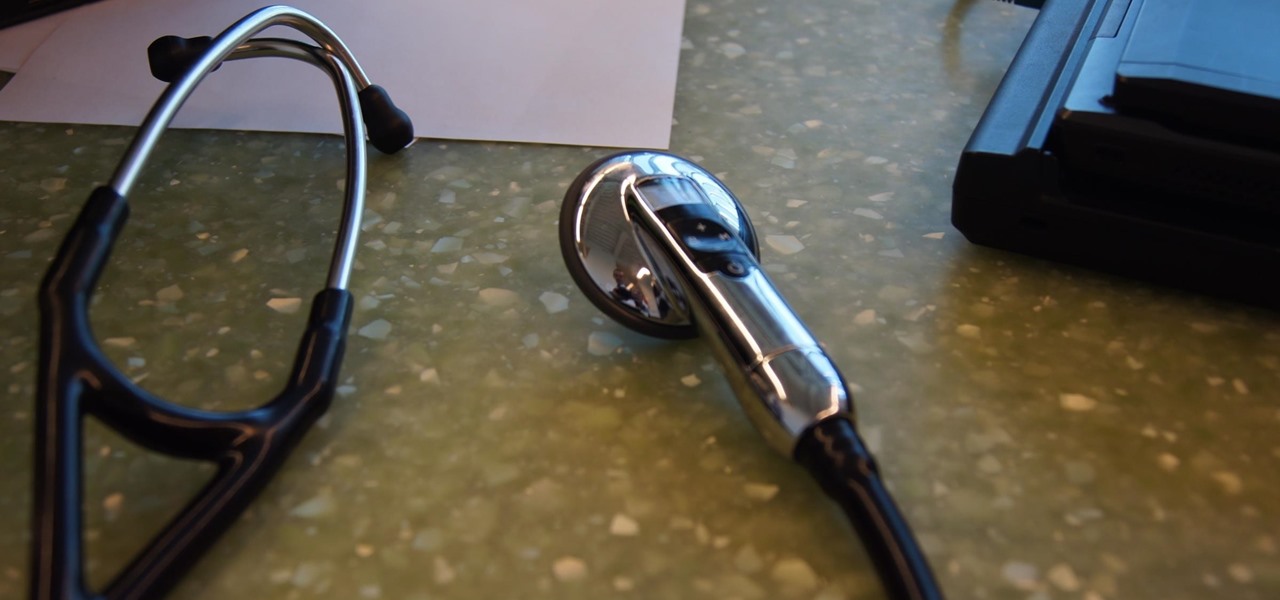
News: Seeing a Doctor? Make Sure They Clean Their Stethoscope
How would you feel if the stethoscope used by your doctor to listen to your heart and lungs was teeming with potentially unfriendly bacteria?
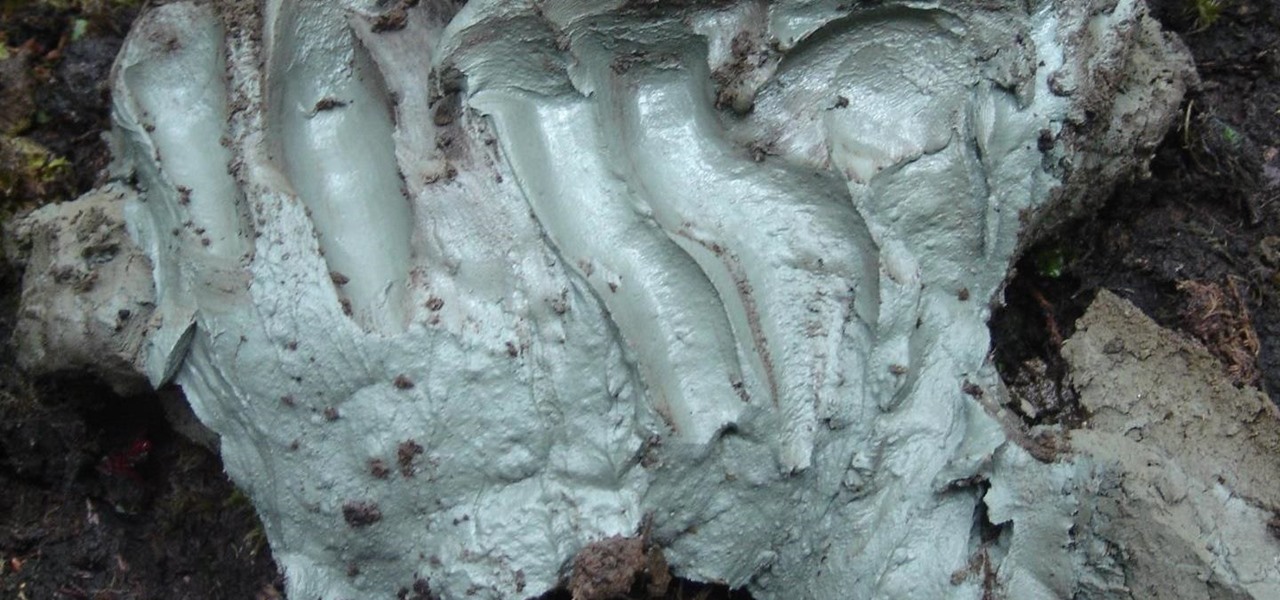
News: Unexpected Microbial Life in Glacial Clay Could Offer Antibiotic Solutions
For as long as 14,000 years, the First Nations people of the Heitsuk Nation have made their home along the Central Coast of the Canadian province of British Columbia. Among the territory's inlets, islands, rivers, and valleys lie a clay deposit on the north side of Kisameet Bay, near King Island. For as long as most can remember, the tribe has used the clay as medicine. Now science says microbes that live in that clay may have important antibacterial properties.
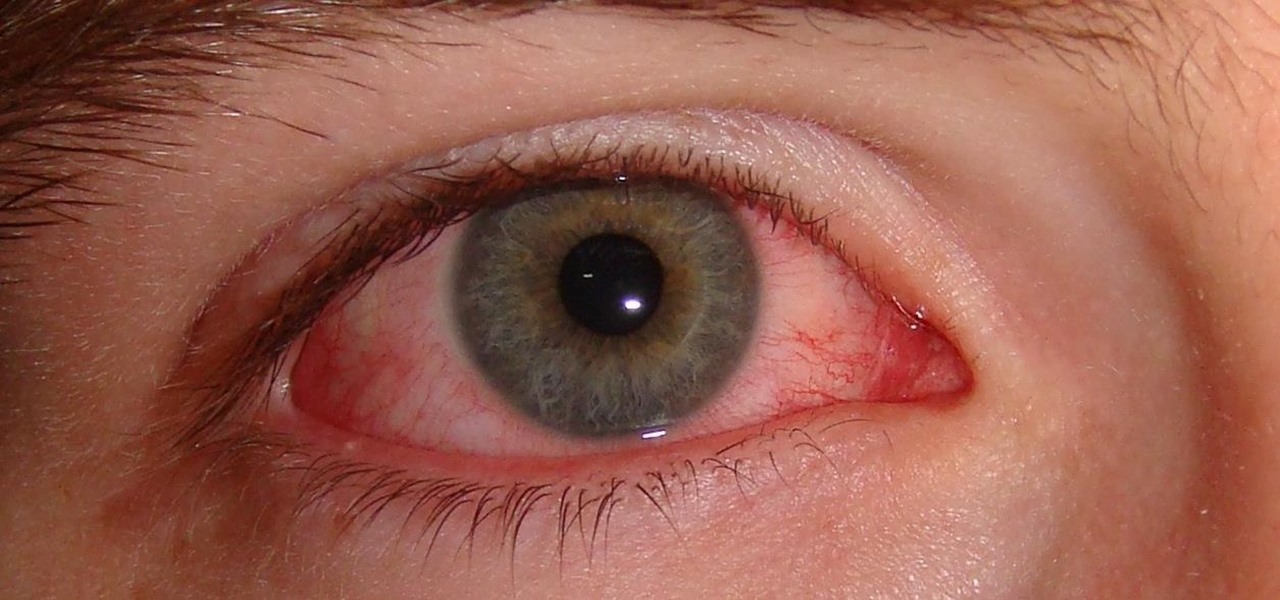
News: You Don't Need Antibiotics for Pink Eye
Crusty, itchy, red eyes? There is a decent chance you could have conjunctivitis, or pink eye, an infection of the thin lining around the eye and the eyelid, caused by bacteria, an allergen, virus, or even your contact lenses. Whatever the cause — you call up your doctor to get a prescription to clear it up, right? Not really.

News: Rare Raccoon Parasite Causing Blindness & Severe Brain Damage Could Be More Widespread Than We Knew
So cute, so furry, and so chock full of parasites. While raccoons are fun to watch, they are neither friendly nor clean — and they can make you sick in more ways than one.
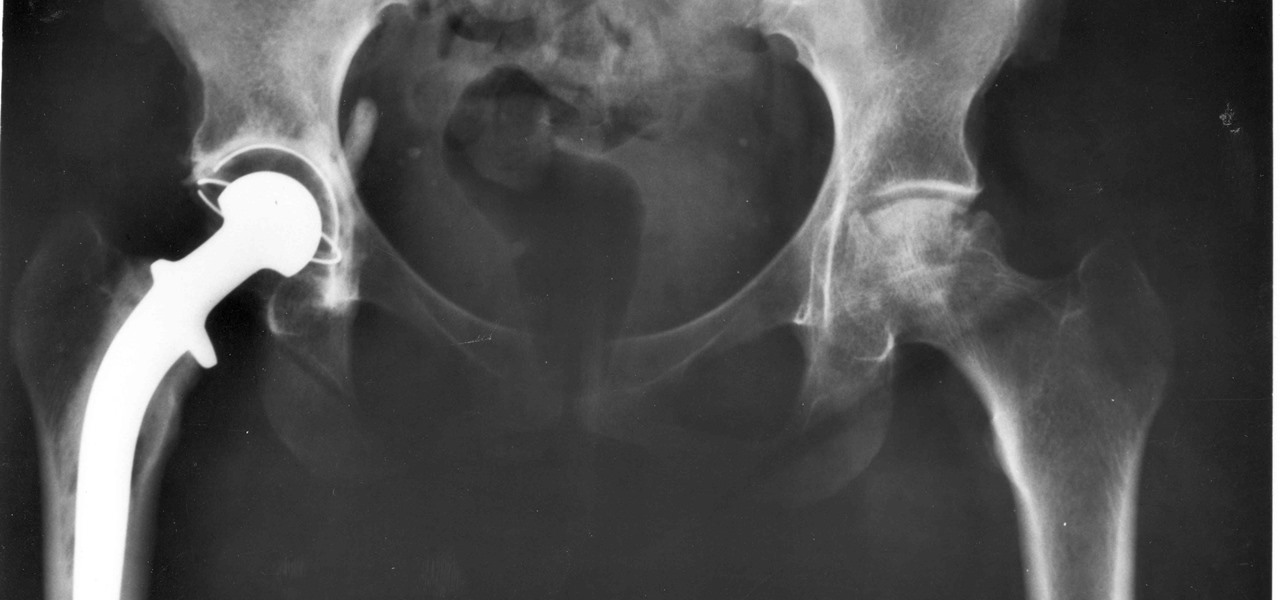
News: Replacement Joints with Antibiotics on Board Mean Lower Chance of Infection & Fewer Surgeries
For about a million Americans each year, a joint replacement brings relief from pain and restored mobility. But, 5–10% of those people have to endure another surgery within seven years, and most of those are due to an infection in their new joint. If doctors could treat infections more effectively, patients could avoid a second surgery, more pain, and another rehabilitation.
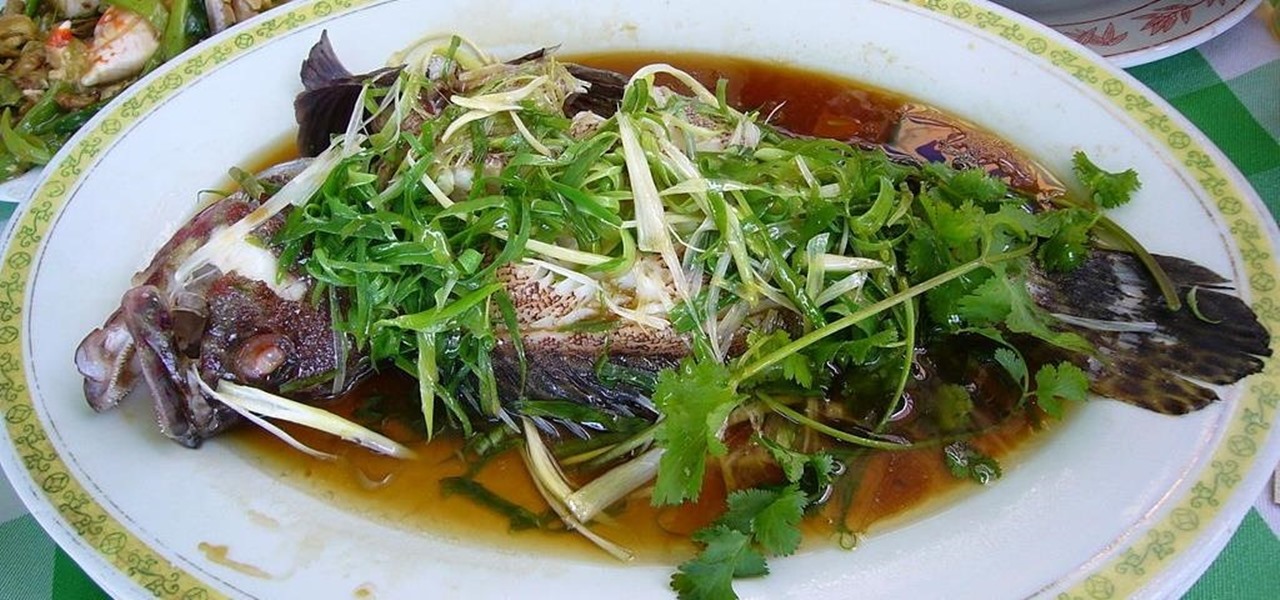
News: Good News, Eating Fish Is Safer! Bad News — Think Twice About Ordering the Grouper
Regarding foodborne pathogens, eating fish is not as hazardous as it was a few years ago — but if fins are on the menu, it's good to have a heads-up about what's good and what's bad these days.
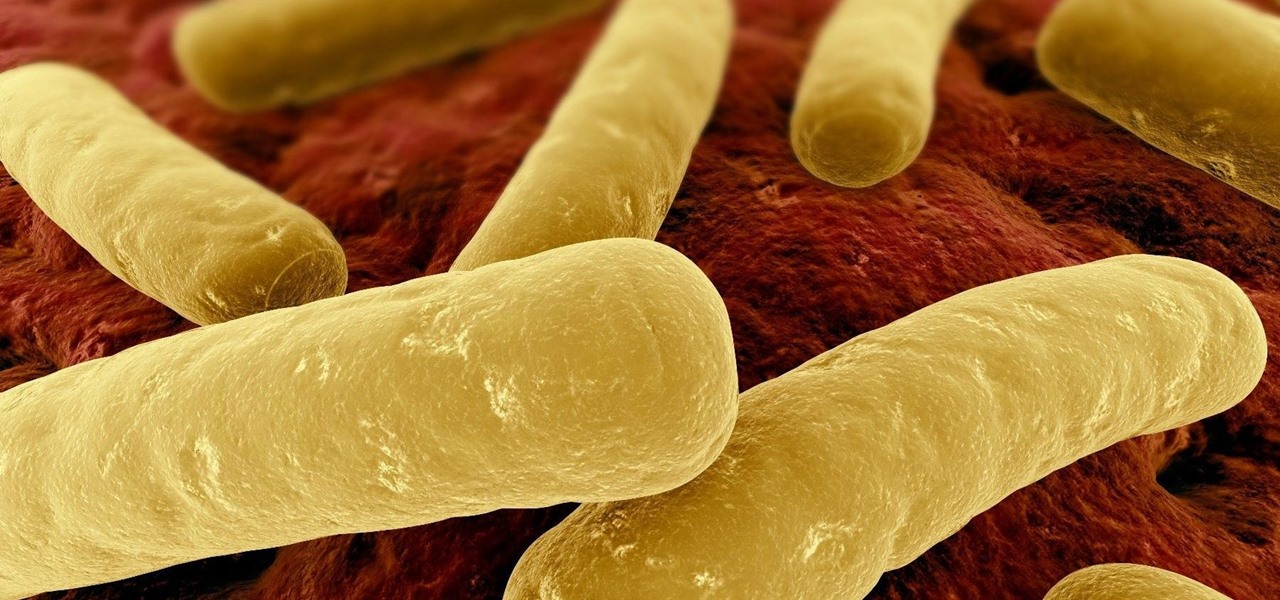
News: How Calcium Sets Off a C Diff Infection
Unfortunately, the very places we go to receive health care put us at risk for becoming infected with superbugs, bacteria exposed to so many antibiotics that they have become immune to their effects. Clostridium difficile (C. diff) is one such bacteria. It causes inflammation of the colon and rampant diarrhea that can have life-threatening consequences. Part of its virulence lies in the tough spores formed by the bacteria. They are responsible for starting infections in the colon and for spre...

News: In Love? True Togetherness Means Sharing the Same Microbes
Love is the spice of life — it is also the microbes that couples share through sickness and in health, through the bathroom and in a hallway.
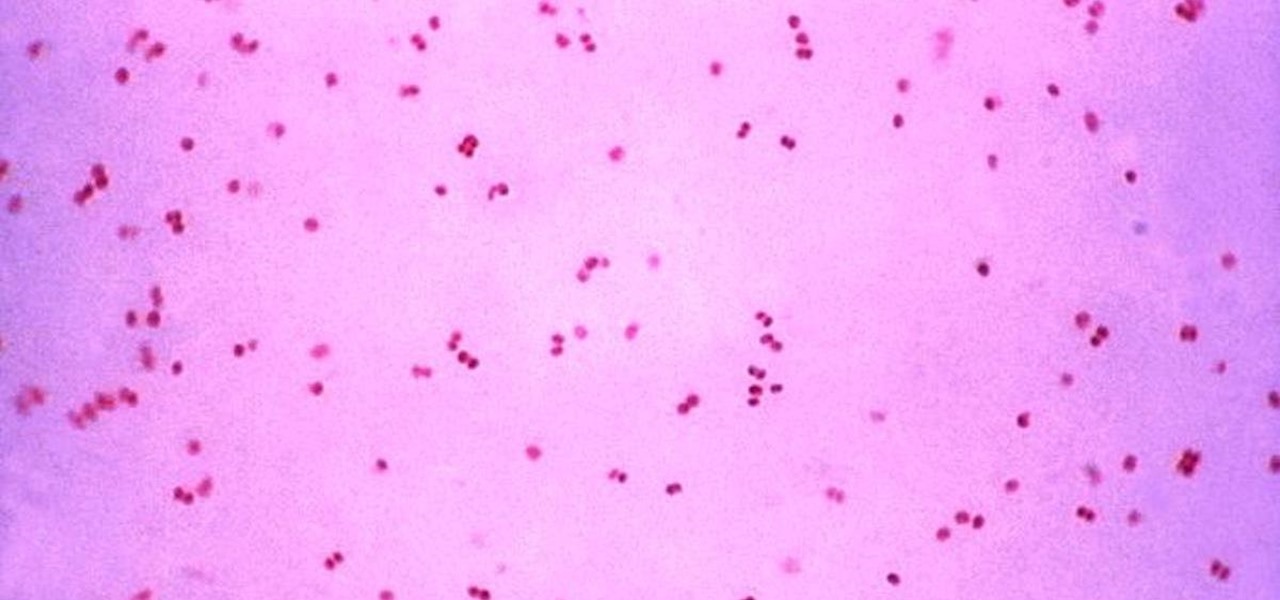
News: Finally, a New Drug Against 'Untreatable' Gonorrhea
Gonorrhea infections reached a peak in 1975, then decreased until 2009, when infection rate started rising and has increased each year since. With the rise of antibiotic resistance, those numbers are only going to get worse — unless we find new treatments against the bacteria.

News: Century-Old Finding May Show the Way to Create Vaccines Against Toxic Strep Infections
Infections with group A streptococcus, like Streptococcus pyogenes, claim over a half million lives a year globally, with about 163,000 due to invasive strep infections, like flesh-eating necrotizing fasciitis and streptococcal toxic shock syndrome.
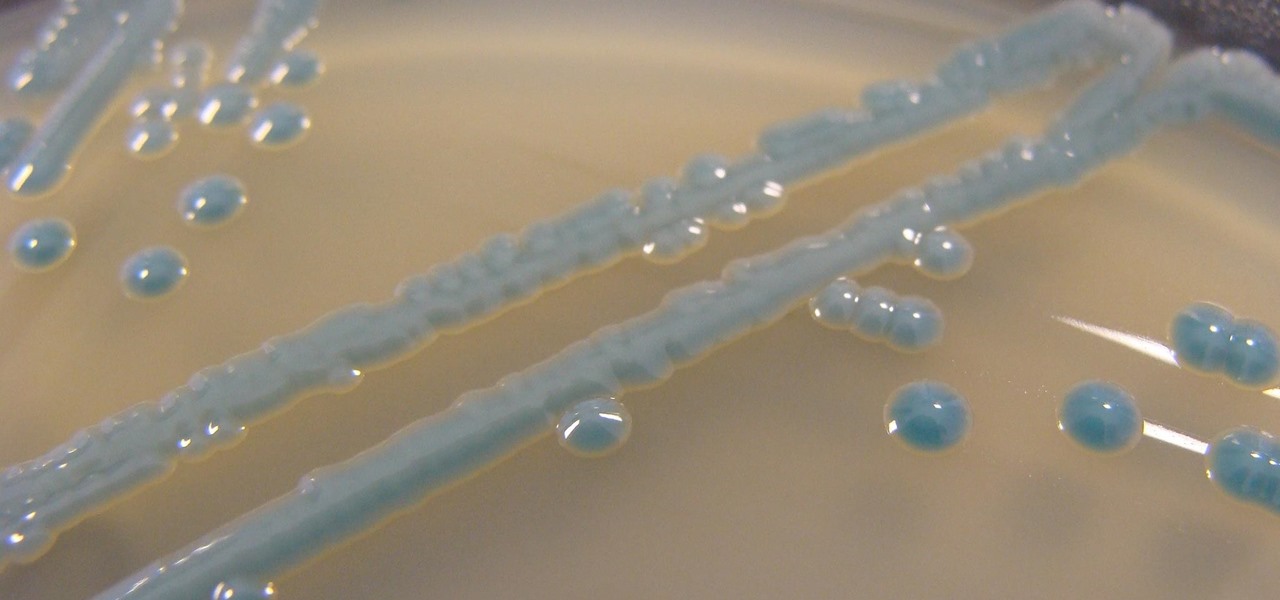
Step Aside MRSA & C Diff: Researchers Just Found 3 New Healthcare Associated Infections
The growing list of dangerous antibiotic resistant organisms has just acquired three new members. Researchers have discovered three new species of Klebsiella bacteria, all of which can cause life-threatening infections and have genes that make them resistant to commonly used antibiotics.

News: CDC Warns About a Big Spike in Cyclospora Infections — Here's What That Is & How to Avoid It
The intestinal parasite Cyclospora cayetanensis has a dramatically increased infection rate this summer, and the source is still unknown, the CDC advised today. 2017 is a good year for Cyclospora looking for homes to start their families and a bad year for those of us who don't like food-stealing tenants living in our bodies.
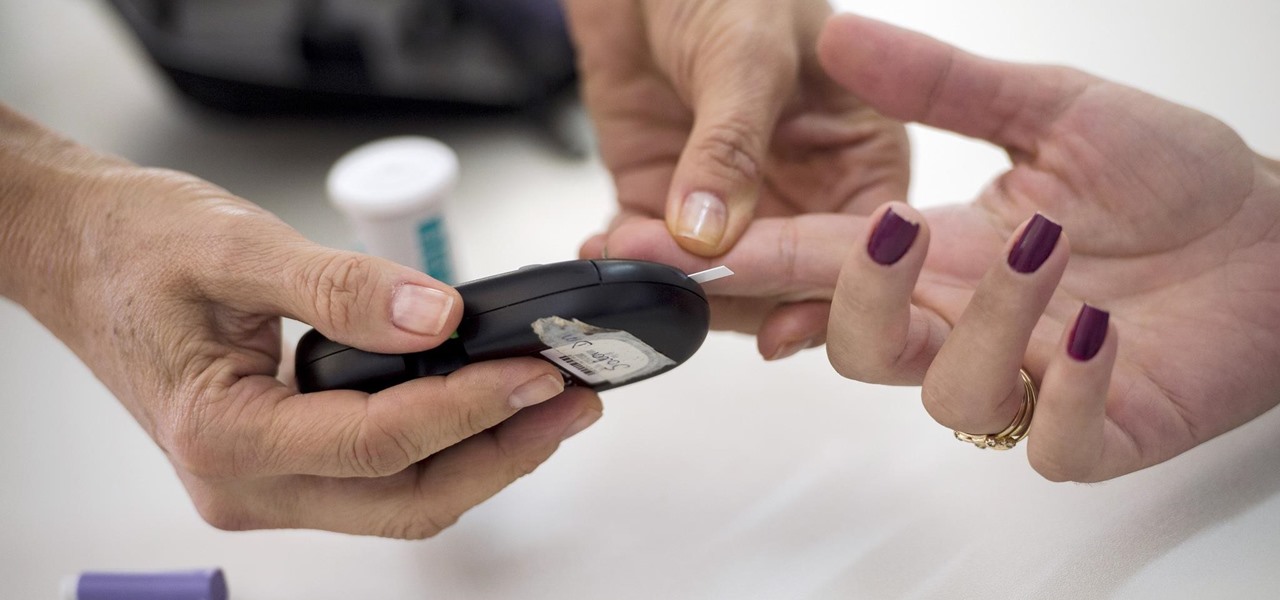
News: Defective, Infectious Proteins Linked to Type 2 Diabetes
More than one in ten people in the US have type 2 diabetes — that's over 29 million people. It's characterized by excessive sugar (glucose) in the blood due to the development of resistance to insulin, the hormone that normally metabolizes glucose.

News: Modern Life Means Less Gut Bacteria, More Chronic Disease
When you have an infection, a doctor prescribes antibiotics to make the bacteria that causes it disappear. Sounds like a good idea, but the disappearance of microorganisms that have inhabited humans for millennia could be driving rising numbers of serious illness and debilitating conditions.
